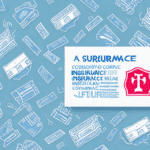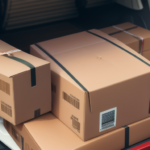How to Insure a Package for Maximum Protection
When you're shipping a package, the last thing you want to worry about is it getting lost or damaged in transit. Luckily, you can add an extra layer of protection by insuring your package. In this article, we'll cover everything you need to know about insuring your package for maximum protection.
The Importance of Package Insurance
Understanding why package insurance is essential is the first step in safeguarding your shipments. When you ship a package, you're entrusting it to carriers who handle it throughout its journey. Unfortunately, accidents can occur, leading to packages being lost, damaged, or stolen. Without insurance, you bear the full financial loss of your package's value. Insurance acts as a safety net, protecting you from potential financial setbacks in the event of such incidents.
Additionally, package insurance provides peace of mind. Knowing that your package is insured alleviates the stress and worry associated with shipping valuable or fragile items. This assurance allows you to focus on other aspects of the shipping process, such as ensuring proper packaging and labeling. With package insurance, you can rest easy knowing that your package is protected and that you’ll be compensated if anything goes wrong.
According to the United States Postal Service, insured packages have a higher rate of compensation in cases of loss or damage, highlighting the importance of securing adequate insurance coverage.
Types of Package Insurance Available
Declared Value Coverage
Declared value coverage allows you to declare the value of your package, offering protection based on the declared amount. However, this type of coverage comes with limitations and restrictions, such as maximum payout limits and exclusions for certain items.
Full Coverage
Full coverage provides comprehensive protection, covering the entire value of your package without restrictions. This option is ideal for high-value items, ensuring that you receive full compensation in case of loss or damage.
Additional Coverage Options
Many carriers offer specialized insurance for high-value or international shipments. For example, FedEx International Shipping Insurance provides extended coverage for items shipped overseas, protecting against additional risks associated with international transit.
High-value insurance may incur additional fees but offers extra protection for particularly valuable items, ensuring that your investment remains secure throughout the shipping process.
Choosing the Right Coverage Amount
Selecting the appropriate coverage amount for your package involves accurately assessing its value and understanding the associated risks. Consider factors such as the item's cost, the probability of damage or loss, and any coverage limitations imposed by the carrier.
Assessing Package Value
Evaluate the total value of the items being shipped, including any additional costs such as taxes or shipping fees. Ensure that the declared value sufficiently covers these amounts to avoid underinsurance.
Considering Shipping Method Risks
The shipping method you choose can influence the level of risk your package is exposed to. For instance, shipping fragile items via standard ground services may necessitate higher coverage amounts to protect against potential transit damage.
Exploring Carrier-Specific Insurance Options
Some carriers offer enhanced insurance options beyond their standard coverage. Research these options to determine if the additional cost is justified for the level of protection they provide.
According to the United Parcel Service (UPS), choosing the right coverage ensures that your package is adequately protected against unforeseen circumstances.
Tips for Properly Packaging Your Items
Proper packaging significantly reduces the risk of damage during shipping. Follow these best practices to ensure your items are well-protected:
- Use sturdy boxes or envelopes appropriate for the size and weight of your items.
- Packing materials such as bubble wrap, foam padding, or packing peanuts should be used to cushion the items.
- Clearly and accurately label your package, avoiding old labels or markings that could cause confusion.
- Seal your packages securely with strong packing tape to prevent them from opening during transit.
Handling Heavy and Fragile Items
For heavier items, utilize double-walled boxes or reinforced envelopes to prevent structural failure. Fragile items should be wrapped individually and insulated with protective materials like bubble wrap or foam padding to minimize impact damage.
Marking Packages as Fragile
Clearly marking your package as "Fragile" alerts carriers to handle it with care, reducing the likelihood of rough handling that could cause damage.
International Shipping Considerations
When shipping internationally, familiarize yourself with the destination country’s customs regulations and requirements. Ensure that all necessary documentation is included to avoid delays or return of your package.
The Federal Express recommends thorough packaging and proper labeling to ensure smooth international shipping processes.
Common Causes of Package Damage and How Insurance Can Help
Packages can suffer damage or loss for various reasons during shipping, including:
- Rough handling by carriers
- Shifting contents during transport
- Improper packaging
- Theft
Insurance helps mitigate these risks by providing compensation for the value of your package if any of these issues occur. For instance, if your package is mishandled and damaged, insurance can cover the cost of repairs or replacement.
It's important to verify that your chosen carrier offers insurance options and to understand their specific terms and conditions. According to the USPS, not all carriers cover the same types of damage or offer the same coverage limits, so careful selection of insurance is crucial.
Filing a Claim for Damaged or Lost Packages
If your package is lost or damaged during shipping, prompt action is essential to recover your losses. Here’s how to effectively file a claim:
- Document the Issue: Take photos of the damaged package and its contents as evidence.
- Gather Necessary Documentation: Collect your shipping receipt, tracking number, and proof of the package’s value.
- Contact the Carrier: Reach out to the carrier’s customer service to initiate the claim process.
- Submit the Claim: Complete the required forms and submit all necessary documentation as per the carrier’s guidelines.
Be aware of the carrier's time limits for filing claims to ensure timely processing. For example, UPS requires claims for lost packages to be filed within 60 days of the shipment date.
Additionally, adhering to packaging and labeling requirements can significantly influence the success of your claim. Failure to comply with these guidelines may result in claim denial.
Avoiding Common Mistakes When Insuring Packages
To maximize the effectiveness of your package insurance, avoid these common pitfalls:
- Assuming Uniform Coverage: Not all carriers offer the same insurance options. Always review the specific coverage details provided by your carrier.
- Underestimating Package Value: Accurately declare the full value of your package to ensure adequate coverage.
- Poor Packaging: Inadequate packaging can lead to damage, potentially complicating insurance claims.
- Ignoring Destination Restrictions: Some carriers have limitations on insurance coverage based on the destination country or region.
For international shipments, be particularly mindful of customs regulations and insurance limitations. Ensure that your insurance provider covers all potential risks associated with international transit.
The Federal Express advises thorough research and preparation to avoid these common mistakes, ensuring smoother shipping experiences and more reliable insurance claims.
Comparing Prices and Coverage Among Shipping Carriers
Choosing the right shipping carrier involves comparing both pricing and insurance coverage options to find the best fit for your needs. Consider the following factors when making your comparison:
Delivery Speed vs. Cost
Different carriers offer various shipping speeds at varying price points. Expedited shipping options may come at a higher cost but can reduce the risk of damage by minimizing the package’s time in transit.
Insurance Coverage Limits
Evaluate the maximum coverage amounts offered by each carrier. Ensure that the carrier’s limits align with the value of your package.
Customer Service and Support
Responsive and effective customer service can greatly assist in resolving issues related to lost or damaged packages. Look for carriers with strong reputations for customer support.
Reputable Insurance Providers
Some carriers partner with established insurance providers, adding an extra layer of reliability to your coverage. Verify the reputation and reliability of these insurance partners.
According to a comparison by Consumer Reports, careful evaluation of both cost and coverage can lead to more cost-effective and secure shipping solutions.
What to Do If Your Package Is Stolen During Delivery
Package theft is an unfortunate circumstance, but taking the right steps can help you recover or mitigate your loss:
- Report the Theft: Immediately notify the shipping carrier about the stolen package.
- File a Police Report: In cases of theft, filing a report with local law enforcement can aid in investigations.
- Submit an Insurance Claim: If your package was insured, initiate a claim to receive compensation for the stolen items.
To prevent future thefts, consider the following measures:
- Use Secure Delivery Locations: Opt for delivery to a secure location, such as a workplace or a locker service.
- Require Signatures: Mandate a signature upon delivery to ensure that packages are not left unattended.
- Install Security Cameras: Security systems can deter theft and provide evidence if a theft occurs.
The USPS offers options like signature confirmation and holds for pickup to enhance package security and reduce the risk of theft.
Conclusion
Insuring your package is a straightforward and effective method to protect your investments during shipping. By understanding the various types of coverage available, properly packaging your items, filing claims promptly, avoiding common insurance mistakes, and comparing different carriers, you can ensure maximum protection for your packages.
Always accurately assess the value of your package and consider opting for full coverage if you’re concerned about potential loss or damage. Additionally, be aware of carrier-specific requirements and restrictions to optimize your insurance benefits.
For more detailed information on shipping insurance options, visit the FedEx International Shipping page or consult with your chosen shipping carrier to tailor your insurance needs effectively.
Additional Considerations
Be mindful that some carriers may have specific restrictions on insuring certain items, such as perishable goods or high-value electronics. Always verify with your carrier to understand the full scope of what is covered and ensure that you meet all necessary requirements for comprehensive protection.






















